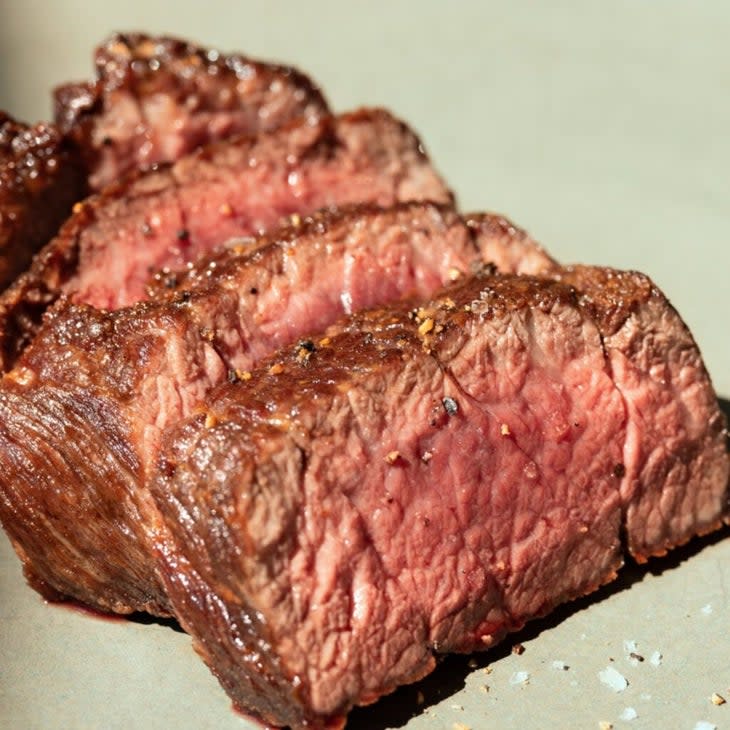Meat for Dummies: How to Source, Serve, and Savor Beef
This article originally appeared on Outside
At 26 years-old, I learned how to cook a steak for the first time.
If you've read about my journey into transitioning from being a long-time vegetarian to eating locally-sourced meat, you know I was clueless about shopping for and cooking locally-grown meat. A trip to Nashville's Bare Bones Butcher and Henrietta Red gave me all the knowledge I needed to become a master at meat - sort of.
Sourcing Meat from Sustainable, Local Farms
The best advice from Bare Bones Butcher General Manager Kyle Colvard was: do your research. Go online and search for local meat near me and learn about how farms near you are practicing sustainable and humane methods. You can also visit a butcher shop and inquire about where they source their meat. Colvard says, chances are, any reputable butcher would be happy to talk about the farms they work with.
As far as grocery store meat, the jury is out on what's sustainable and what isn't. Food labels are misleading, vague, and can be confusing. For example, 'free range' labels imply that animals, such as chickens, are free to roam outside of cages. But the Factoring Farming Awareness Coalition reports that the USDA only requires chickens to have access to outdoor space for 51 percent of their lives. These animals most likely will have access to a small enclosed outdoor space along with 20,000 other chickens.
The Certified Humane label is an across-the-board better certification than most. It comes from a nonprofit called Humane Farm Animal Care, which makes sure meat comes from farms where animals are raised in comfortable, safe environments that follow anti-animal abuse practices.
Certain regional grocery stores, like Whole Foods, may carry meat from local farms, so check for location-specific labels.

Cooking A Denver Steak
Luckily, I was invited into highly-acclaimed Nashville restaurant Henrietta Red by Chef Julia Sullivan. It's tough to get a table at this eatery, let alone be welcomed into the kitchen for a cooking demonstration.
When I visited, the restaurant had not yet opened but the kitchen was lively, the cooks already prepping for lunch and dinner service. Sullivan welcomed me into the back of the bustling kitchen where she announced I would be learning how to cook a Denver cut of steak.
Here's what you need to know about a Denver cut:
It's taken from the shoulder area of a cow, specifically a section underneath the shoulder blade bone.
It's the fourth most tender cut on a cow.
It's incredibly marbled with tons of flavor and juices.
Prepping the Pan
You wouldn't invite a guest into your house without first prepping the guest room, right? In the same realm, it's important to prepare your pan before beginning the cooking process. Heat the pan before coating with grapeseed oil, a neutral oil good for cooking at high heat because of its high smoke point.
If you're like me, someone who tends to burn the oil, make sure your burner isn't on high, which flames reaching up the sides of the pan. You're just looking to build residual heat and have the oil in the pan produce a shimmery ripple versus a boil.
Seasoning the Meat
A steak doesn't have to be dressed up in an exorbitant amount of spices and seasoning to be tasty. Sullivan recommends salt and pepper for a Denver cut because the meat itself is so high-quality it doesn't take a lot to highlight those juicy flavors.
Season generously and evenly on all sides of the cut, flipping it around so you get everything covered. Sullivan recommends 3/4 to 1 teaspoon of salt per pound.
Cooking
Warning: The steak will make a loud sizzling noise when it hits the pan for the first time.
The key to cooking a Denver cut is to get a nice even sear without moving the meat around too much. Once you've got a good sear (about two to three minutes), then you can rotate it. Do it too soon and you disturb the process.
While experienced chefs like Sullivan can eyeball meat and tell when it's done cooking, less acquainted cooks (like me) should use a meat thermometer.
Here's the catch I didn't know existed when it comes to cooking meat: Carry over cooking. Meat holds a lot of residual heat and will continue to cook even after it's out of the pan. Sullivan explains that if you're going for a medium cooked piece of meat, you'll want the temperature to end at 140 degrees Fahrenheit internally. But to get that temperature, you should take it off the heat when it hits an internal temperature of 130 degrees Fahrenheit.

Basting
Basting is optional - but it sure shouldn't be. Add garlic and butter to a pan until it's filled with a buttery foam. Repeatedly spoon over the meat for at least one minute or until the butter is no longer bubbling. Basting offers a nice flavor and creates a confection oven of sorts as the hot butter cooks it on all sides.

Resting
The final step to this process is the easiest (and easiest to skip) but it's absolutely essential. Remove the meat from the pan and place it on a warm plate or serving platter to rest. This allows for the juices in the meat to redistribute evenly.
For exclusive access to all of our fitness, gear, adventure, and travel stories, plus discounts on trips, events, and gear, sign up for Outside+ today.

